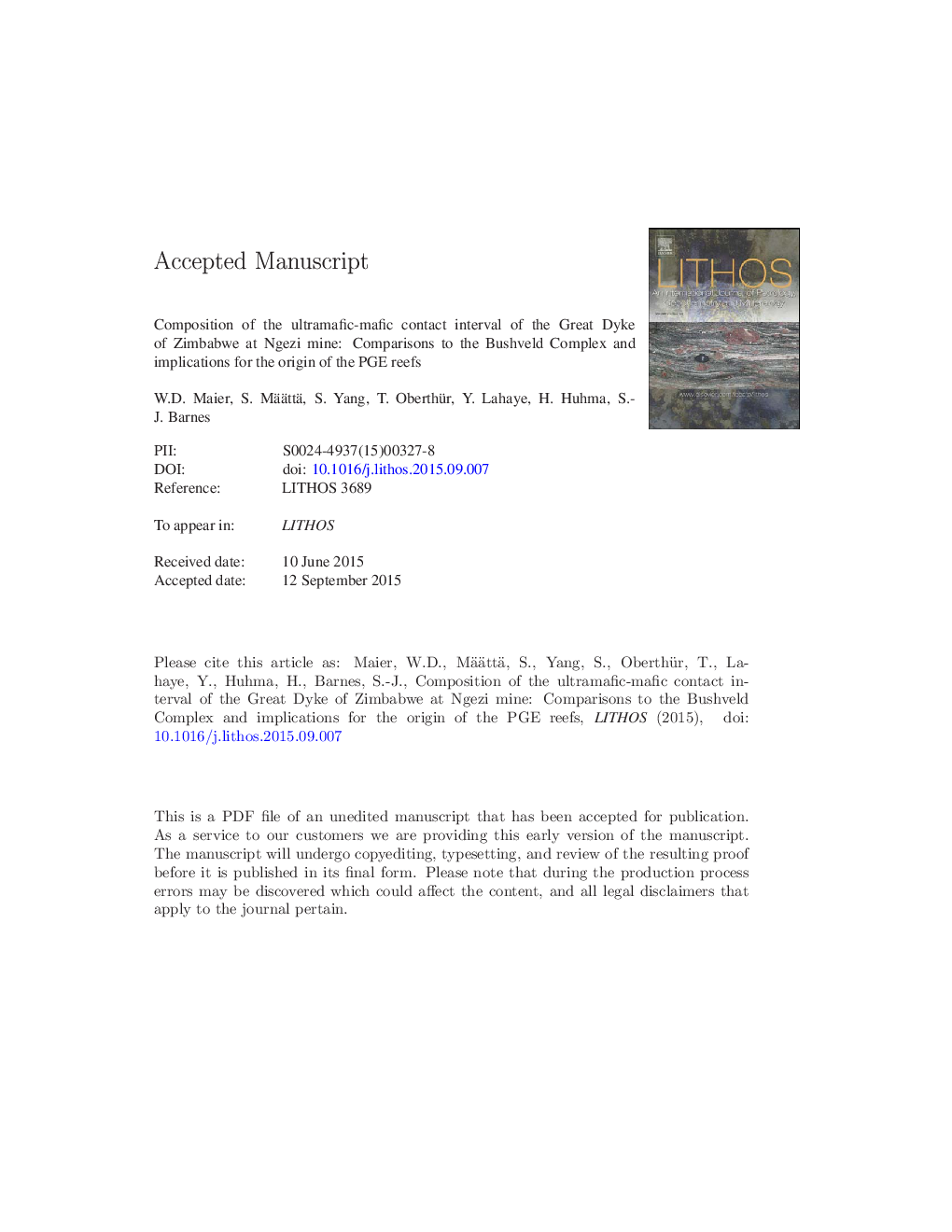| Article ID | Journal | Published Year | Pages | File Type |
|---|---|---|---|---|
| 6440549 | Lithos | 2015 | 50 Pages |
Abstract
The Great Dyke contains the world's second largest platinum resource after the Bushveld Complex. Isotopic and trace element data from the interval straddling the contact between the Ultramafic and Mafic Sequences of the Great Dyke indicate a less enriched composition than in the Bushveld Complex (Great Dyke: Sri 0.7024-0.7028, εNd mostly â 1 to + 1, Ce/Sm 2-6; Bushveld: Sri 705-0.709, εNd â 5 to â 7, Ce/Sm 5-15). These data are interpreted to reflect relatively moderate amounts of contamination of the Great Dyke parent magma. All analyzed isotopes show little variation across the Main Sulfide Zone and the ultramafic-mafic contact. This corroborates earlier work by other researchers that the Great Dyke crystallized from a single magma type. Mixing of compositionally distinct magmas, proposed to have caused sulfide melt saturation in the Bushveld Complex, seemingly played little or no role in the formation of the PGE mineralization in the Main Sulfide Zone, and neither did enhanced crustal contamination of specific magma batches. Instead, sulfide melt saturation of the magma was likely triggered by silicate fractionation. The mechanism of concentration of the sulfide melt remains uncertain, but theoretical considerations suggest that phase sorting in response to slumping of crystal mushes, possibly caused by chamber subsidence, played an important role. This model is consistent with the highly irregular, undulating nature of the contact between the mafic and ultramafic zones of the intrusion, in the hanging wall of the Main Sulfide Zone.
Related Topics
Physical Sciences and Engineering
Earth and Planetary Sciences
Geochemistry and Petrology
Authors
W.D. Maier, S. Määttää, S. Yang, T. Oberthür, Y. Lahaye, H. Huhma, S.-J. Barnes,
